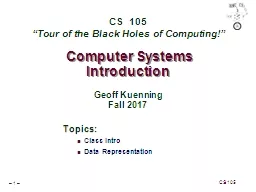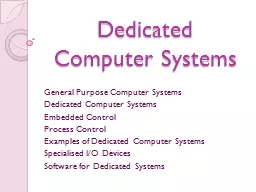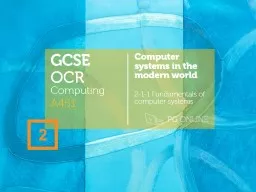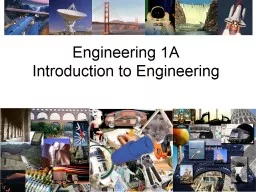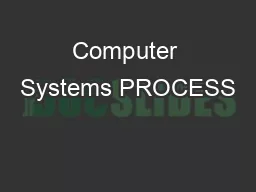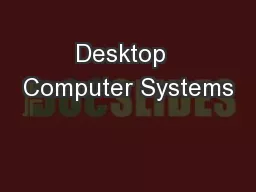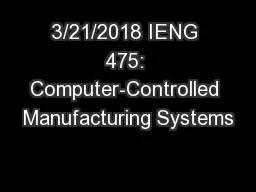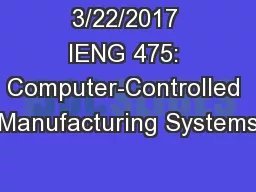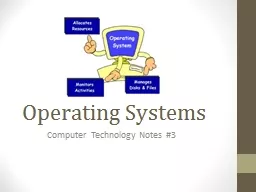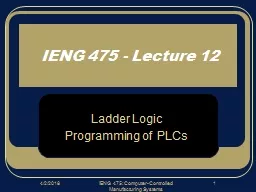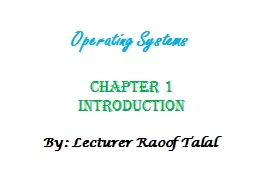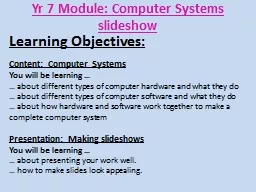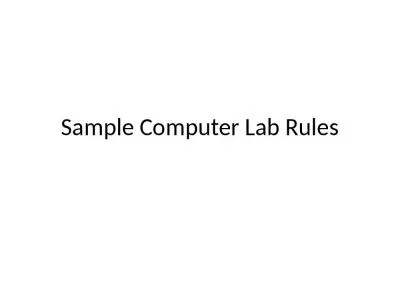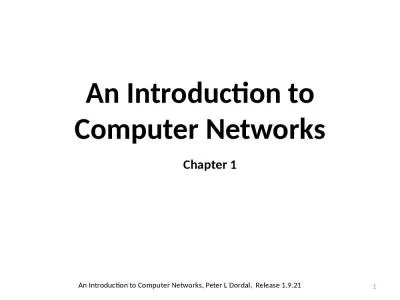PPT-Computer Systems Introduction
Author : calandra-battersby | Published Date : 2018-09-21
Topics Class Intro Data Representation CS 105 Tour of the Black Holes of Computing Geoff Kuenning Fall 2017 Course Theme Abstraction is good but dont forget reality
Presentation Embed Code
Download Presentation
Download Presentation The PPT/PDF document "Computer Systems Introduction" is the property of its rightful owner. Permission is granted to download and print the materials on this website for personal, non-commercial use only, and to display it on your personal computer provided you do not modify the materials and that you retain all copyright notices contained in the materials. By downloading content from our website, you accept the terms of this agreement.
Computer Systems Introduction: Transcript
Download Rules Of Document
"Computer Systems Introduction"The content belongs to its owner. You may download and print it for personal use, without modification, and keep all copyright notices. By downloading, you agree to these terms.
Related Documents

